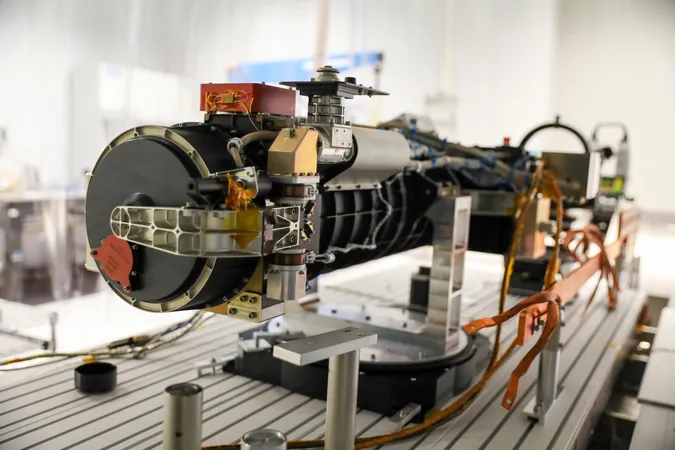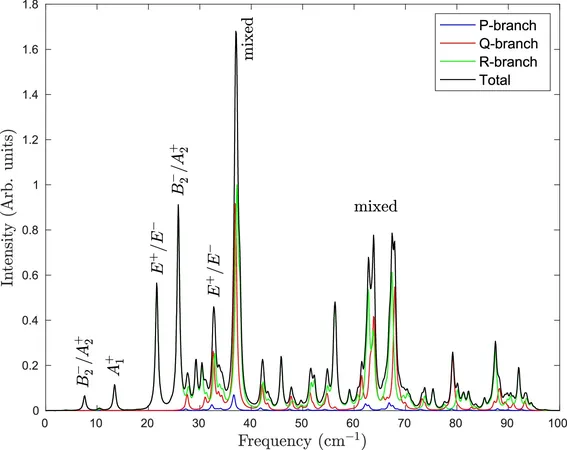
CODEX Coronagraph Launches to the ISS to Unlock Solar Mysteries
2024-11-08
Author: Ming
Introduction
A revolutionary space observatory is on its way to solving one of the most tantalizing puzzles of our solar system: the secrets of the Sun's outer atmosphere, known as the solar corona. A recent mission involving SpaceX's Cargo Dragon has successfully transported the Coronal Diagnostic Experiment (CODEX) to the International Space Station (ISS), where it will carry out groundbreaking research.
The Challenge of Observing the Corona
The solar corona—the pearly white halo visible only during total solar eclipses—has long been a source of intrigue for scientists. Its intricate dynamics and the processes that govern it remain largely shrouded in mystery, especially when viewed from Earth, where the immense brightness of the Sun obscures it. CODEX aims to pierce that veil by creating an 'artificial eclipse,' allowing researchers to focus directly on this elusive layer of the Sun's atmosphere.
Having arrived at the ISS on November 5th as part of SpaceX's Cargo Mission CRS-31, CODEX represents a collaboration among NASA’s Goddard Space Flight Center, Italy’s National Institute for Astrophysics (INAF), and the Korea Astronomy and Space Science Institute (KASI), with valuable technical insights from the U.S. Naval Research Laboratory.
Why Choose Coronagraphs?
Utilizing a coronagraph—an instrument with an occulting disk slightly wider than an orange—CODEX will minimize atmospheric interference by operating in the vacuum of space. This configuration enhances its ability to analyze the corona's mid-region, thought to be the origin of the solar wind—a stream of charged particles that shapes our planetary environment.
Currently, one of the biggest questions in solar physics is why the corona reaches temperatures exceeding a million degrees Celsius, far hotter than the Sun's surface temperature of just 6,000 degrees Celsius. CODEX is set to investigate this anomaly by measuring various properties of the corona, such as the temperature and velocities of plasma at different wavelengths.
Revolutionizing Solar Research
As CODEX embarks on its mission aboard the ISS, it will work in tandem with other significant solar missions like NASA's Parker Solar Probe and the European Space Agency's Solar Orbiter. Together, these instruments will provide vital data to help address the heating puzzle and gather new insights into solar wind dynamics.
According to Niicholeen Viall of NASA, 'While the Parker Solar Probe offers detailed local measurements of solar plasma when it is closest to the Sun at 10 solar radii, CODEX will provide a broad perspective that will connect those findings back down to 3 solar radii.' This additional information will help clarify how coronal heating occurs and lead to improved models of solar behavior.
Decoding the Solar Wind
An understanding of the corona and solar wind not only satisfies scientific curiosity; it also holds key implications for space weather forecasting. With solar storms capable of disrupting satellite communications and even endangering astronauts, the research outcomes from CODEX could help protect technological infrastructure on Earth.
The underlying mechanisms of coronal heating—whether they involve magnetic reconnection or Alfvén waves—remain actively debated among scientists. Ultimately, CODEX's unique capabilities, including its ability to filter light to measure solar wind properties, promise to enhance our understanding considerably.
Looking Forward: A New Era for Solar Physics
The legacy of coronagraphs in space observation dates back decades, dating from the white-light coronagraph used during NASA's Skylab mission in the 1970s. As we advance into the future, upcoming missions like the European Space Agency’s Proba-3 and NASA's PUNCH (Polarimeter to UNify the Corona and Heliosphere) aim to further expand our observation tools.
The anticipation surrounding CODEX is palpable, as scientists await the invaluable data it will collect on solar winds and the corona's mysteries. Experts believe that as CODEX starts to peer closely into the heart of solar phenomena, we may soon unlock the secrets that have eluded us for centuries.
Stay tuned—the revelations from CODEX are sure to expand our horizons about the Sun's behaviors in astonishingly profound ways!


 Brasil (PT)
Brasil (PT)
 Canada (EN)
Canada (EN)
 Chile (ES)
Chile (ES)
 España (ES)
España (ES)
 France (FR)
France (FR)
 Hong Kong (EN)
Hong Kong (EN)
 Italia (IT)
Italia (IT)
 日本 (JA)
日本 (JA)
 Magyarország (HU)
Magyarország (HU)
 Norge (NO)
Norge (NO)
 Polska (PL)
Polska (PL)
 Schweiz (DE)
Schweiz (DE)
 Singapore (EN)
Singapore (EN)
 Sverige (SV)
Sverige (SV)
 Suomi (FI)
Suomi (FI)
 Türkiye (TR)
Türkiye (TR)